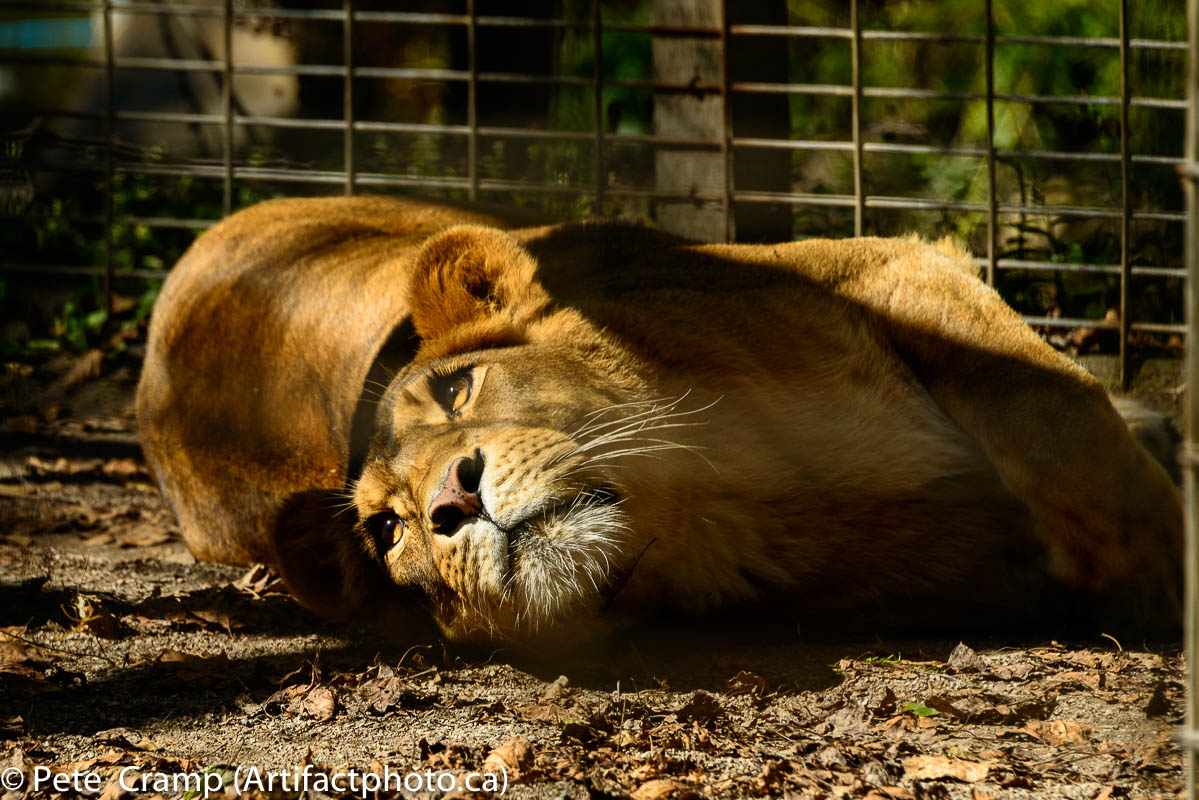So, if you’ve been wondering why I haven’t written much this year, it’s been busy. I went back to work, which took the lion’s share of my time, and I’ve been given a one-year old child to take care of, who takes up the rest. I’m also writing a travelog about my trip to Great Britain, in spare moments, such as on my weekly train ride to Toronto. So not a lot of time for the photography business. That being said, I am making it out to different attractions most weekends to amuse the little guy.
This week, we checked out the Elmvale Jungle Zoo, just north of Barrie, Ontario, Canada.
The zoo was established back in 1968, which means it was still in a very primitive state when I first encountered it on one of my family vacations in the early ‘70s. We were not impressed.
Time went on, and I returned to it a few years back and found it an interesting small zoo with established paths with fairly large cages spaced throughout the forest. They also have a fairly large, open area set aside for the giraffes, zebras, bison, and other plain’s dwellers. If you are hauling around a one-year old, it’s a great zoo — not too big, with plenty of shade and significant sun, centrally located washrooms with changing tables, and even a snack bar and a playground.
Now for the photography lesson.
When you’re capturing a creature hanging out in a cage, how do you get rid of the bars?

You need a telephoto lens, quite a bit of light, and preferably shade on the bars. And you need the creature to be deeper into the cage. The idea is that you use the telephoto lens’ narrow depth of field so that you’re focusing on the on the critter and not much else. The physics of depth of field dictate that roughly one-quarter of the distance that is in focus is in front of the point of focus, and the rest is beyond the point of focus. This means that if the bars are close to the camera and the critter is significantly far toward the back then the bars will be out of focus to the degree they will appear invisible, while the background behind the critter will be in either focus or soft-focus. If the bars are in shadow, there is a higher likelihood that they will disappear completely.
The lots of light part allows you to use your widest f-stop, which produces the narrowest depth of field. Using a digital camera, you can, of course, cheat by using a higher ISO. This sometimes results in a greater amount of noise (grain). To combat this, you can shoot a little to the right (over-expose and compensate in Lightroom or Photoshop).
Now here’s the weird part. I quietly talk to the animals. I know, they probably don’t understand, but sometimes it attracts their attention and sometimes they even seem to listen, posing for the camera. Check out the eagle.

I talked to him for about ten minutes, steadily clicking away while he gave me his right side, left side, looked up and down on queue, and finally gave me the big show with opening his wings. He likely didn’t understand a word I said, can’t possibly know what a camera is, but he’s been shouted at by enough humans that he knows what gets the best oohs and aahs. And someone paying that much attention to him just might deserve his whole routine. At least, that’s what I chose to believe. It also makes me feel less oppressive or rude. Oddly, it works best for me with birds

and apes. The lions didn’t listen, but then they endure a great number of rather excited and unruly visitors, and to cope, being cats, just ignore the crowd as much as possible.
So, to recap:
- Use a telephoto with the widest aperture you can
- Hope the creature is positioned a reasonable distance from the front of the cage
- Hope the front of the cage is shadowed
- Engage the creature pleasantly
- Focus on the creature’s eyes so that his beak/nose is in focus as well as a significant portion toward the back of his head

If you practice enough, and you work at being lucky, you’ll wind up with some pretty good shots that appear to be taken inside the cage. It’s a pretty neat trick.
I’m going to try to get a blog article out at least once a month, but I can’t guarantee anything. Thanks for reading.
Pete
